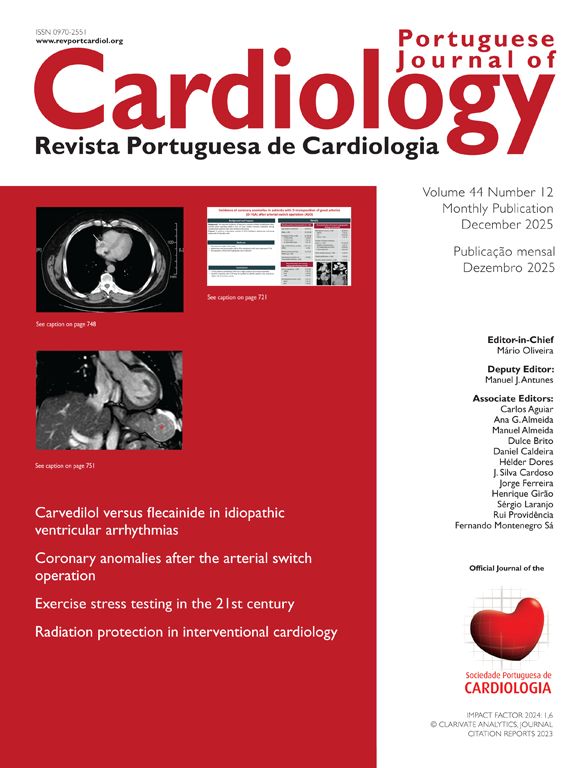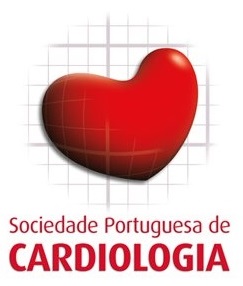
Portuguese WGMPD Recommendations and consensus documents on Transthyretin Amyloidotic Cardiomyopathy
Mais dadosTransthyretin amyloidosis (ATTR) is caused by the extracellular deposition of amyloid fibrils of wild-type (ATTRwt) or variant (ATTRv) transthyretin (TTR). While ATTRwt amyloidosis is essentially a cardiac disease, ATTRv amyloidosis may present with different phenotypes, ranging from predominantly cardiac to predominantly neurologic, or even mixed phenotypes, depending on the TTR gene variant.1–3
Transthyretin amyloid cardiomyopathy (ATTR-CM) is a progressive cardiomyopathy that causes heart failure, dysrhythmias and conduction block, which eventually lead to death.1
Median survival following diagnosis in untreated patients with ATTR-CM is 3.6–4.8 years in the wild-type form, 2.6 years in ATTR-CM due to the Val142Ile variant and 5.8 years in ATTR-CM caused by other TTR variants.4,5
To improve the prognosis of ATTR-CM, it is important to implement strategic measures that (i) increase awareness of ATTR amyloidosis, (ii) ensure early referral of cases with suspicion of ATTR-CM, (iii) promote early screening, diagnosis and treatment of ATTR-CM, and (iv) assure appropriate symptomatic management of the disease.
However, some questions remain concerning who should be screened for ATTR-CM, and international recommendations differ regarding the red flags that should prompt screening for ATTR-CM.6
Moreover, despite the development of a non-invasive diagnostic algorithm, the diagnosis of ATTR-CM remains complex. Exclusion of immunoglobulin light-chain amyloidosis may require cardiac magnetic resonance imaging, biopsy and hematology referral, and international guidelines differ on the criteria that should be used to establish cardiac involvement by ATTR amyloidosis.7,8
Furthermore, several therapeutic options have emerged in recent years for the treatment of ATTR-CM,9–12 creating the need for a critical review of clinical trials to help cardiologists in clinical practice.
Finally, symptomatic management of ATTR-CM manifestations is complex and quite specific, and most conventional guidelines used for other cardiac conditions cannot be applied to this disease. Several questions remain unclear, such as the best therapeutic regimen for heart failure in ATTR-CM, whether anticoagulation should be started in patients in sinus rhythm, who are the best candidates for cardiac devices including pacemakers, cardiac resynchronization therapy devices and implantable cardioverter-defibrillators, and which is the best therapeutic approach for patients with severe aortic stenosis and coexisting ATTR-CM.
The Working Group on Myocardial and Pericardial Diseases of the Portuguese Society of Cardiology brought together a Task Force of experts on ATTR-CM and produced Portuguese recommendations on the screening, diagnosis and treatment of ATTR-CM.13
This document (i) provides clear recommendations on which patients should be screened for ATTR-CM; (ii) performs a critical appraisal of international guidelines and provides a practical algorithm for the diagnosis of ATTR-CM; (iii) contains an in-depth review of current evidence and provides evidence-based recommendations for the symptomatic management of ATTR-CM manifestations, such as heart failure, dysrhythmias and conduction disease, as well as for the management of patients with the dual pathology of severe aortic stenosis and ATTR-CM; and (iv) summarizes the available evidence and provides evidence-based recommendations on the targeted disease-modifying treatment of ATTR-CM.13
These recommendations aim to promote early screening, diagnosis and treatment of ATTR-CM in Portugal, as well as to guide physicians on the appropriate symptomatic management of the disease, in order to achieve better outcomes for these patients.13
The Val50Met variant is endemic in Portugal and causes a predominantly neurologic phenotype.14,15 Many of these patients have undergone orthotopic liver transplantation (OLT) and developed ATTR-CM several years after transplantation, due to the deposition of wild-type transthyretin amyloid fibrils in the heart.16,17
Although specific treatment for ATTR-CM is now available, post-OLT patients have been excluded from clinical trials of targeted disease-specific therapies,9–12 leading to the current controversy in Portugal concerning whether these post-OLT ATTR-CM patients should be treated with disease-specific therapies. As a consequence, there are now several patients in Portugal with post-OLT ATTR-CM, for whom a targeted disease-specific therapy was not made available and in whom ATTR-CM continues to progress inexorably until death.
To ensure equity of access to treatment in this country, the Working Group on Myocardial and Pericardial Diseases of the Portuguese Society of Cardiology, together with the heads of the two Portuguese reference centers for Val50Met familial amyloidosis, have produced a position statement that provides clear recommendations on the diagnosis and treatment of patients with post-OLT ATTR-CM.18
Early treatment achieves better outcomes,19 so ensuring early diagnosis is a key strategic goal. To this end, a multidisciplinary panel of experts from different settings, including cardiology, internal medicine and primary care, have produced a consensus document that identifies red flags for ATTR-CM and provides a referral algorithm, adapted to the Portuguese context of the disease, in which cases with suspicion of ATTR-CM are referred to cardiomyopathy clinics and cases with suspicion of ATTRv amyloidosis due to the Val50Met variant are referred to the Portuguese reference centers on this condition.20 This document aims to increase the awareness of physicians, in hospitals as well as in primary care settings, on ATTR-CM and to improve early referral of cases with suspected ATTR-CM.20
Taken together, these three documents provide recommendations to guide physicians in clinical practice, focusing on all key strategic points, from awareness on ATTR amyloidosis to early referral of suspected cases of ATTR-CM and finally to early screening, diagnosis and treatment and appropriate management of ATTR-CM patients.13,18,20
Supplement informationThis article is part of a supplement entitled ‘Portuguese WGMPD Recommendations and consensus documents on Transthyretin Amyloidotic Cardiomyopathy’ which is sponsored by Grupo de Estudo de Doenças do Miocárdio e do Pericárdio da Sociedade Portuguesa de Cardiologia - Portuguese Society of Cardiology Working Group on Myocardial and Pericardial Diseases.
Conflicts of interestMarques N: Speaker and consulting honoraria from Pfizer and Alnylam. Support for travel/accommodation for congresses from Pfizer and Alnylam.
Azevedo O: Speaker and consulting honoraria from Pfizer and Alnylam. Support for travel/accommodation for congresses from Pfizer, Alnylam and Astra Zeneca.





